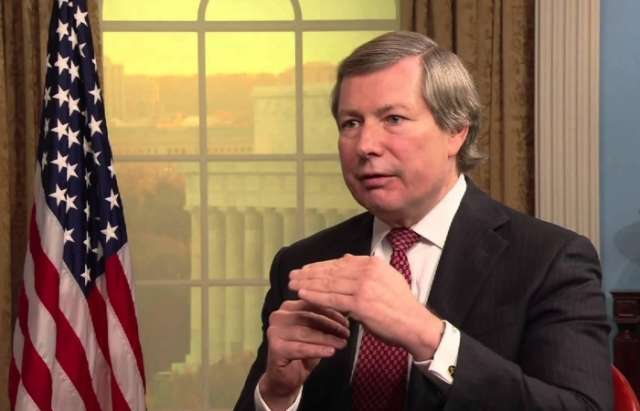"As a result, the line of contact between Nagorno Karabakh and Azerbaijan is one of the most militarized zones in the world. Many of the factors caused by the April four-day war do not only exist, but they have further aggravated", Magdalena Grono - representative of International Crisis Group said at the hearings on the Nagorno Karabakh conflict in the US Congress Helsinki Commission, Voice of America reports.
Former US Co-Chair of the OSCE Minsk Group Carey Cavanaugh (1999-2001) said the sides should implement the already reached agreements to minimize the possibility of military operations, which are the followings: to increase the number of international observers in the line of contact and give them powers to investigate ceasefire violation cases.
"If the sides are unable to implement them, perhaps, we should reach signing of agreements between other forces instead. For instance, Turkey and Russia can be committed not to interfere if the conflict turns into military operations. The United States can exchange data of special services with Russia over the ceasefire violations in Nagorno Karabakh", Carey Cavanaugh said.
"The sides have reached an agreement almost for several times, and the last one was in 2011", James Warlick said.
According to the Ambassador, the proposals on the table, as well as the referendum on Karabakh's status, the international security guarantees, the land border between Armenia and Karabakh and the return of Azerbaijani regions must be viewed as one collective agreement. Regardless of contradictions all experts agree that no one needs a new war and new victims.
“The UN resolution and related documents, as well as the main principles of the Helsinki Final Act constitute the basis of this resolution. Six elements which are based on the Madrid principles must be the main content of the peace agreement. The first element is about granting temporary autonomy to the Nagorno-Karabakh. The mutual consensus will define the legal status of Karabakh. The second element will focus on granting temporary autonomy to the areas which are included in the administrative border of the Nagorno-Karabakh Autonomous Oblast and guaranteeing maximal protection and self-governing. The third element will demand to return seven occupied territories of Azerbaijan surrounding Nagorno-Karabakh. The existence of the “Lachin corridor”, which forms the shortest route between Armenia and the Nagorno-Karabakh, will be a focal point of the fourth element. This corridor must allow moving but must not surround the whole Lachin region. The fifth element highlights the law which will allow IDPs to return back to their lands. The last one deals with international safety warrants as well as the peace building operation”, Warlick said.
The conflict between the two South Caucasus countries began in 1988 when Armenia made territorial claims against Azerbaijan. As a result of the ensuing war, in 1992 Armenian armed forces occupied 20 percent of Azerbaijan, including the Nagorno-Karabakh region and seven surrounding districts.
The 1994 ceasefire agreement was followed by peace negotiations. Armenia has not yet implemented four UN Security Council resolutions on withdrawal of its armed forces from the Nagorno-Karabakh and the surrounding districts.
More about: #Azerbaijan #Armenia
















































